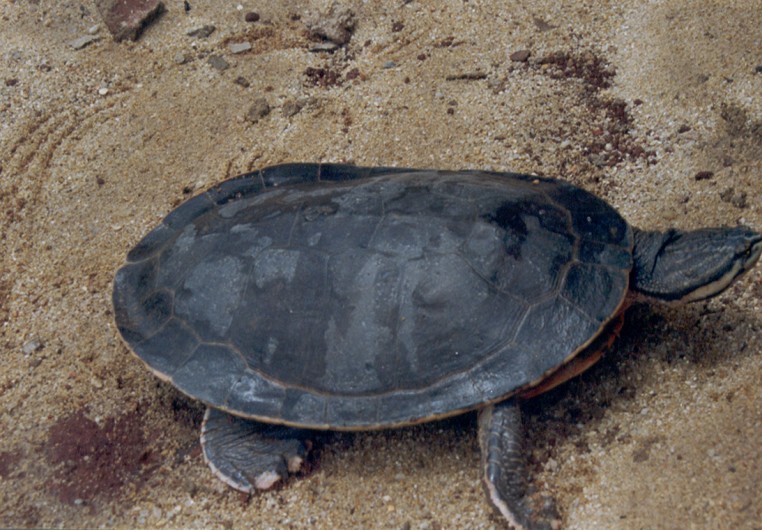Biodiversity
 Geoffroy's Toadhead Turtle
Phrynops geoffroanus | Schweigger, 1812
Geoffroy's Toadhead Turtle
Phrynops geoffroanus | Schweigger, 1812

Characteristics: It is a flat-shelled tortoise with a color ranging from greenish-gray to black. The central region of the shell is depressed, forming a groove. The shell is very flat, the animal is large and may reach 70cm in length.
Distribution: The Phrynops geoffroanus tortoise is the chelonian with the widest distribution in the Neotropics. It occurs almost everywhere in Brazil, from the Amazon to Rio Grande do Sul.
Habitat: Flooded environments, small creeks, rivers, lakes and perennial ponds, swamps and marshes, i.e. all types of wetland environments. It may cover large distances by land in search of water.
Habits: By day, in the edges of terrestrial environments or on rocks located in aquatic areas, being found alone or groups. Its low metabolism allows it to stay underwater for a long time.
Diet: This tortoise's diet is omnivorous; it feeds in the water and likes fish, amphibians, small birds, and even carrion, and it may also eat aquatic plants and fruits.
Breeding: Egg-laying, females generally lay their eggs twice a year, between February and May and from September to December, in the rainy season. The nest consists of 9 to 14 eggs, reaching up to 32 eggs, the incubation period of which is about 150 days.
Threat: It is not considered a species threatened with extinction.
UFRA: This species is considered relatively rare, having been sighted only in the Restored Native Forest macro-habitat, near streams and dams.



